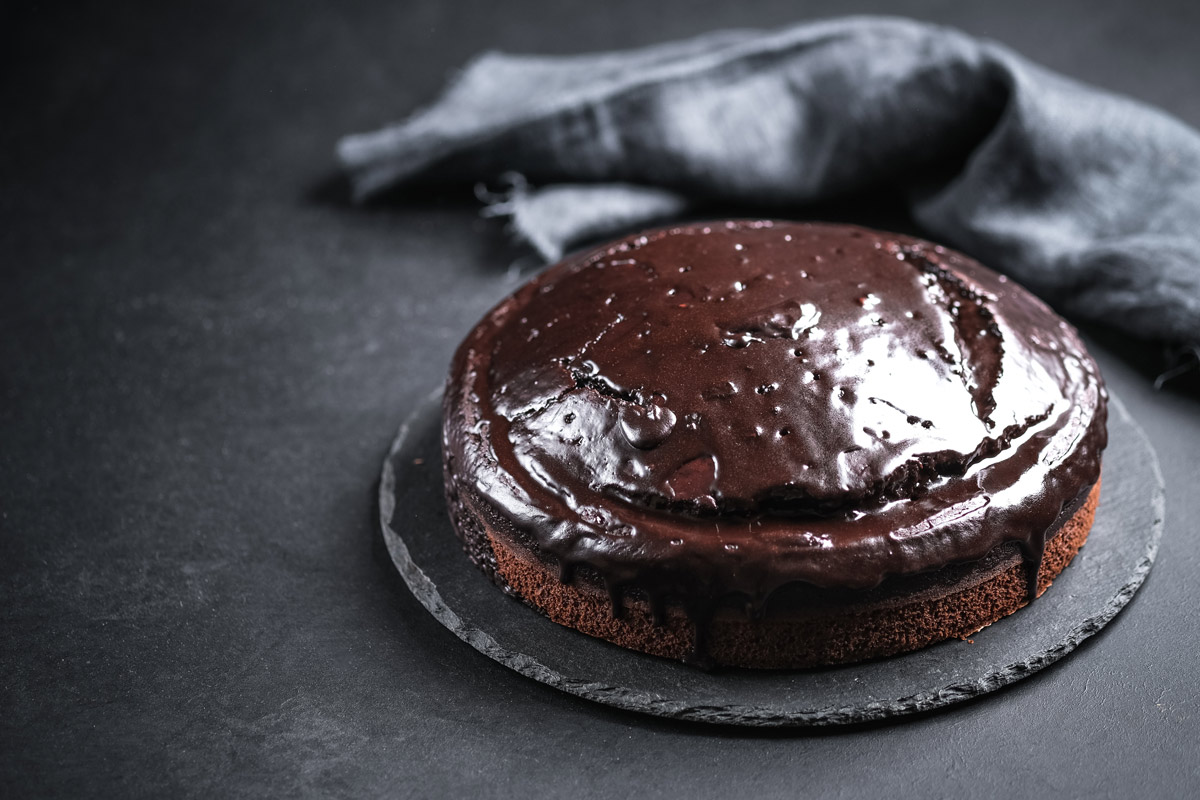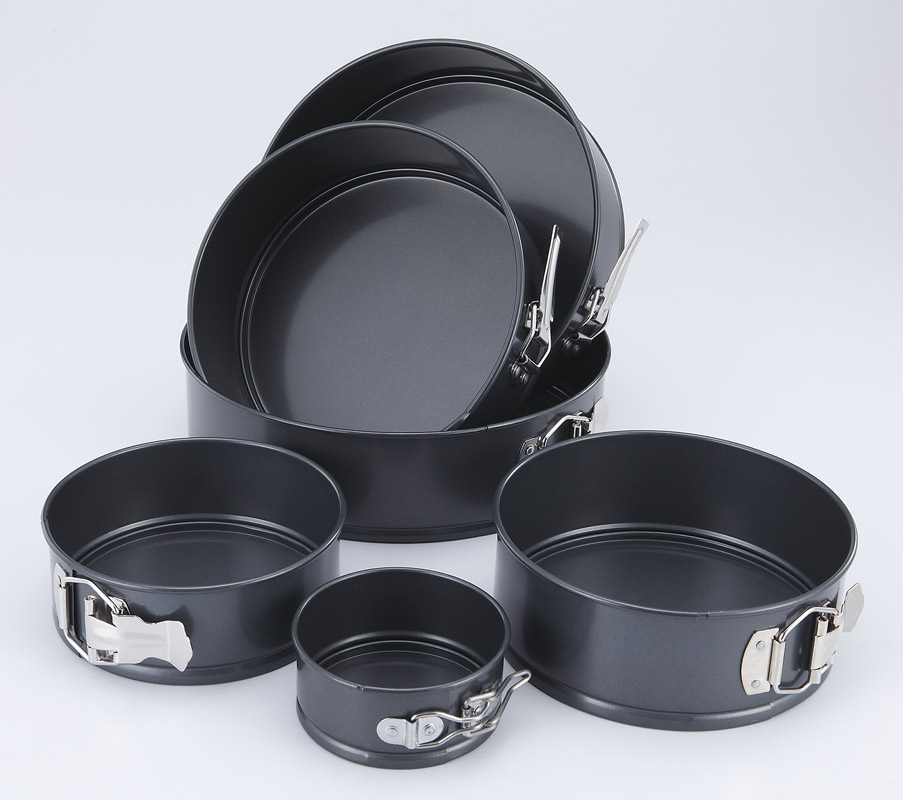Flourless Walnut Cake Recipe, Spotlight on Egg Whites and Springform Pans, The Mediterranean “Diet” and Brain Benefits of Exercise
Craving a delicious gluten-free cake but unsatisfied with alternative flours? This recipe breaks the mold, so to speak, with nutrient-packed walnuts and cocoa. What’s more, it can be part of a healthy way of eating, one that emphasizes lifestyle—yes, the Mediterranean diet. The importance of taking a holistic approach to the way you eat is the message of the latest research showing that yo-yo dieting is dangerous rather than being a helpful weight loss solution. I’m also sharing a positive consequence that comes from the release of dopamine during exercise beyond its feel-good mood boost.
Flourless Walnut Cake
 Flourless Walnut Cake
Flourless Walnut CakeYou don’t have to forgo dessert when you want to cut out flour. Ground nuts make a delicious and healthy alternative. I’ve included a luscious chocolate glaze, but this cake is delicious on its own or topped with a dollop of whipped cream.
Ingredients
For the cake:
- 2 tablespoons extra virgin olive oil, plus more for the pan
- 3 tablespoons unsweetened dark cocoa, divided use
- 8 ounces shelled walnuts
- 6 large eggs, separated
- 1 cup sugar
- 1 teaspoon vanilla extract
- Pinch fine sea salt
For the glaze:
- 8 ounces dark chocolate
- ½ cup half-and-half
- 1 tablespoon extra virgin olive oil
Directions
Step 1
Preheat your oven to 350°F with a rack in the center position. Lightly brush the bottom and sides of a 9-inch cake pan with olive oil and then place a circle of parchment paper in the bottom of the pan, brush it with oil, and sprinkle it with 1 tablespoon cocoa; rotate the pan to distribute the cocoa on the bottom and sides. Shake out any excess.
Step 2
In a nut grinder or food processor, grind the walnuts until medium-fine (you may need to do this in batches). Transfer to a bowl and whisk in the remaining 2 tablespoons of cocoa and set aside.
Step 3
In a stand mixer fitted with a balloon whisk or in a large bowl with an electric mixer, whip the egg yolks until pale yellow and thickened, about 5 minutes. Gradually beat in the sugar, then the vanilla and the remaining olive oil, and continue beating until very thick, about 3 more minutes. Use a spatula to fold in the walnut-cocoa mixture.
Step 4
In a clean bowl, beat the egg whites on low speed until foamy. Add the salt and gradually increase the speed to high; beat until glossy and stiff. Working in two or three batches, gently fold the whites into the yolk mixture. Transfer to the cake pan and bake for 40-45 minutes until the cake starts to come away from the sides of the pan; the tip of a sharp knife inserted in the center should come out clean except for a few crumbs.
Step 5
Let the cake cool on a wire rack for 10 minutes (it will sink a bit), then invert onto another rack. If the cake doesn’t turn out easily, run a spatula around the inner rim to release it from the sides of the pan. Peel off the parchment and invert it again onto a cake plate. Let it finish cooling.
Step 6
For the glaze, place 7 ounces of the chocolate in a small, microwave-safe glass bowl along with the half-and-half and melt at 50% power for 3 minutes, until the chocolate is almost fully melted (if needed, microwave in additional 1-minute increments). Add the last ounce of chocolate and let sit on the counter for 2 minutes to cool down, then stir until smooth. Whisk in the olive oil until smooth. Wait until the glaze cools to room temperature, then pour over the top of the cake and use a long offset metal spatula to spread it in an even layer. Let it set for about an hour before serving.
Yields 8 servings

Healthy Ingredient Spotlight
Freezing Egg Whites
While it’s possible to freeze extra yolks and whites when a recipe calls for more of one than the other, yolks are not as forgiving as whites—better to use them in a custard or curd. Whites, on the other hand, not only freeze well but whip up perfectly after defrosting. The easiest way to freeze them is to place each white in a compartment of a large ice cube tray; when frozen, pop them out and into a freezer-safe bag, then back in the freezer. Thaw in the fridge the day before you’ll be using them.

Quick Kitchen Nugget
Springform Pans
While parchment paper is a great way to avoid having a cake stick to the bottom of a cake pan, a springform pan goes a step further. It’s invaluable when making a torte or cheesecake that’s so pliable it could break down the middle when trying to get it out of a regular baking pan.

Once you unlatch the springform pan’s removable ring, it’s easy to slide a cake lifter under the cake or simply cover the top of the cake with a large dish and flip it to remove the bottom and peel off your parchment—I like to think of the parchment as a double layer of protection. (If the sides of the cake happen to be sticking to the ring, slide a rubber or silicone spatula between the cake and the side to gently free the cake before unlatching the ring.) Always transfer your cake from the springform base as soon as it’s cool. Cutting a cake on the base will scratch it, and there’s also the chance that your dessert could pick up the taste of the pan’s material if left on it for too long.
The classic springform pan is metal, and many come with a nonstick coating. Like most other kitchen tools, springform pans are now available in silicone, which is good for sturdier bakes, but not always for soft or dense ones or when you want to build a crust up the sides because of the material’s flexibility. Good-quality silicone pans are also less likely to leak than metal ones (the possibility of leakage is why many recipes suggest wrapping a springform pan with foil).
Springform pans are available in many sizes, from 6 inches for a petite cake up to 12 inches. For a first pan, the 9-inch size will be the most versatile.

For Your Best Health
Think Twice Before You “Diet”
Diet is a word with different meanings. When we talk about diet at the Fresh-Pressed Olive Oil Club, it’s in the context of the Mediterranean diet. Though it can help you lose weight, it’s a way of life, not something you go on and off of. And it offers a social dynamic, which makes people feel that they’re part of an inclusive group.
When most people use the word diet, they typically mean a weight-loss diet, something research has told us again and again doesn’t work. That’s because people follow such a diet for a set time and then, unfortunately, revert to old ways of eating, usually regaining the lost weight and then some…only to try another weight-loss diet in the future. A new study, done at North Carolina State University, found just how toxic yo-yo dieting, also known as weight cycling, is and how difficult it can be to break the cycle.
“Yo-yo dieting—unintentionally gaining weight and dieting to lose weight only to gain it back and restart the cycle—is a prevalent part of American culture, with fad diets and lose-weight-quick plans or drugs normalized as people pursue beauty ideals,” said Lynsey Romo, PhD, corresponding author of the study and an associate professor of communication at NC State. “Based on what we learned through this study, as well as the existing research, we recommend that most people avoid dieting, unless it is medically necessary. Our study also offers insights into how people can combat insidious aspects of weight cycling and challenge the cycle.”
For the study, researchers conducted in-depth interviews with 13 men and 23 women who had experienced weight cycling during which they lost and regained more than 11 pounds. All the study participants reported wanting to lose weight due to social stigma related to their weight and/or because they were comparing their weight to that of celebrities or peers. “Overwhelmingly, participants did not start dieting for health reasons but because they felt social pressure to lose weight,” Dr. Romo said.
The study participants also reported engaging in a variety of weight-loss strategies, which resulted in initial weight loss but eventual regain. Regaining the weight left people feeling worse about themselves than they did before they began dieting. This, in turn, often led to increasingly extreme behaviors to try to lose weight again. “For instance, many participants engaged in disordered weight management behaviors, such as binge or emotional eating, restricting food and calories, memorizing calorie counts, being stressed about what they were eating and the number on the scale, falling back on quick fixes (such as low-carb diets or diet drugs), overexercising, and avoiding social events with food to drop pounds fast,” said Dr. Romo. “Inevitably, these diet behaviors became unsustainable, and participants regained weight, often more than they had initially lost.”
“Almost all of the study participants became obsessed with their weight,” says Katelin Mueller, co-author of the study and graduate student at NC State. “Weight loss became a focal point for their lives, to the point that it distracted them from spending time with friends, family, and colleagues, and reducing weight-gain temptations such as drinking and overeating.”
“Participants referred to the experience as an addiction or a vicious cycle,” Dr. Romo said. “Individuals who were able to understand and address their toxic dieting behaviors were more successful at breaking the cycle. Strategies people used to combat these toxic behaviors included focusing on their health rather than the number on the scale, as well as exercising for fun rather than counting the number of calories they burned. Participants who were more successful at challenging the cycle were also able to embrace healthy eating behaviors, such as eating a varied diet and eating when they were hungry, rather than treating eating as something that needs to be closely monitored, controlled, or punished.”

Fitness Flash
Your Brain on Exercise
Dopamine, the neurotransmitter and hormone tied to pleasure, satisfaction, and motivation, is known to increase when you work out. Recent findings suggest it is also linked to faster reaction times during exercise. The researchers in the UK and Japan behind the discovery say it could lead to a new therapeutic pathway for cognitive health because of dopamine’s significant role in several conditions including Parkinson’s disease, schizophrenia, ADHD, addiction, and depression.
The study measured the release of dopamine in the brain using the scanning device called positron emission tomography (PET). It tracked the metabolic and biochemical activity of the cells in the body. Explained Joe Costello, PhD, of the University of Portsmouth School of Sport, Health & Exercise Science in the UK, “We know cardiovascular exercise improves cognitive performance, but the exact mechanisms behind this process have not been rigorously investigated in humans until now. Using novel brain imaging techniques, we were able to examine the role dopamine plays in boosting brain function during exercise, and the results are really promising. Our current study suggests the hormone is an important neuromodulator for improved reaction time. These findings support growing evidence that exercise prescription is a viable therapy for a host of health conditions across the lifespan.”

As part of the study, three experiments were carried out with a total of 52 men. In the first, individuals were asked to carry out cognitive tasks at rest and while cycling in the PET scanner so the team could monitor the movement of dopamine in their brain. The second used electrical muscle stimulation to test whether forced muscle movement to stimulate exercise would also improve cognitive performance. The final experiment combined both voluntary and involuntary exercise. In the experiments where voluntary exercise was carried out, cognitive performance improved. This was not the case when only forced electrical stimulation was used.
“We wanted to remove voluntary muscle movement for part of the study, to see if the process in which acute exercise improves cognitive performance is present during manufactured exercise. But our results indicate that the exercise has to be from the central signals of the brain, and not just the muscle itself,” said Soichi Ando, PhD, associate professor in the Health & Sports Science Laboratory at the University of Electro-Communications in Japan. “This suggests that when we tell our central command to move our body during a workout, that’s the process which helps the dopamine release in the brain.”
“These latest findings support our previous theory that cognitive performance during exercise is affected by changes to brain-regulating hormones, including dopamine,” added Dr. Costello. “There could also be a number of other psychophysiological factors, including cerebral blood flow, arousal, and motivation, that play a part.”
The paper, published in The Journal of Physiology, says further studies are needed and should include a range of participants, including women and older individuals, over a longer period of time to fully understand how dopamine release is linked to cognitive performance following exercise.
Get More Recipes In Your Inbox!